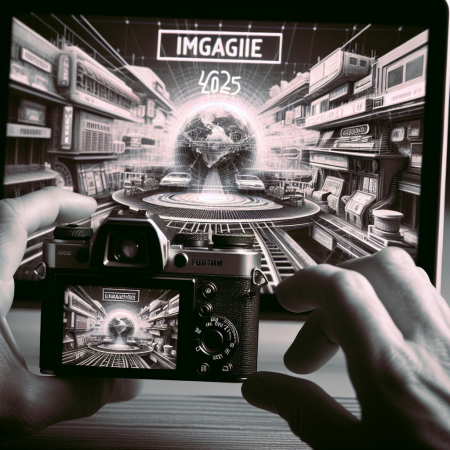Multiply engagement by embedding immersive 3D content into landing pages in 2025
Understanding the Power of Immersive 3D Content
The Evolution of Content Marketing
Let’s face it: we’re living in an age where flat 2D content just doesn’t cut it anymore. From my experience, audiences are craving deeper interactions. When I started incorporating 3D content into my marketing strategy, I noticed a drastic change in how users engaged with my landing pages. It was like flipping a switch!
3D content offers a dynamic visual experience that can transport users into a digital environment. This capability makes your products more tangible, allowing potential customers to explore and interact with them in a way that traditional images and videos simply can’t. Trust me: once they see your product from every angle, they’re way more invested.
Moreover, the technology is only getting better! Companies like Sketchfab and Matterport are making it easier than ever to create stunning immersive content that can be easily integrated into landing pages, enhancing the overall user experience.
Creating Engaging 3D Experiences
Selecting the Right 3D Tools
First off, if you’re new to 3D content, don’t sweat it! There are plenty of user-friendly tools out there. I started with tools like Blender and Tinkercad, which are both great for beginners. With just a bit of time and practice, you can create captivating 3D models that tell your brand’s story.
It’s all about finding the right tool that fits your design style and technical skill. Some platforms even have pre-made templates, which can help you hit the ground running. The key is to pick a tool that you feel comfortable with, so you can let your creativity flow without getting bogged down by the tech.
Also, keep in mind that you want to create content that aligns with your brand image. Whether you’re selling high-tech gadgets or vintage clothing, your 3D models should resonate with your target audience and reflect your unique brand personality.
Integrating 3D Content into Your Landing Pages
Seamless Integration Techniques
So, you’ve got your 3D content ready – now what? Integration is key to ensuring your immersive experiences don’t just look good but actually function well! I like to embed 3D content directly into my landing pages using iframe or JavaScript for a smooth user experience.
Take a bit of time to ensure your 3D models load quickly. No one likes a slow-loading page, especially when they’re excited to see your products up close. Using lightweight models and optimizing for web are crucial steps I always take before launching my content.
Lastly, make sure you provide clear navigation for users. Interactive elements, like zoom or rotation, can enhance the experience, but it’s best to guide your visitors on how to use these features to fully appreciate your offerings.
Measuring the Impact of 3D Content
Analytics Tools to Track Engagement
One of the coolest parts about using immersive content is being able to measure its impact! I love diving into analytics post-launch to see how users are engaging with my 3D models. Tools like Google Analytics can track interactions, clicks, and, most importantly, how long users stayed on the page.
It’s also a good idea to set up A/B tests with and without 3D content to see tangible differences in engagement rates. I’ve seen significant boosts in conversion rates just by adding that extra layer of immersion. It’s super encouraging to see those numbers climb!
And remember to collect user feedback. Surveys or quick polls can provide valuable insights into how your audience is reacting to the content and what tweaks they’d love to see in the future.
Future Trends in 3D Content Marketing
The Rise of AR and VR
Looking ahead, the trends in 3D content marketing are getting even more exciting with the rise of augmented reality (AR) and virtual reality (VR). Imagine allowing customers to explore a virtual store or try on clothes in their own home – that’s the future I dream about!
Companies are beginning to incorporate AR features into their mobile apps and websites, enabling users to visualize products in their physical space. I can’t emphasize enough how powerful this can be for closing sales – customers are more likely to purchase when they can see how the product fits into their lives.
If you’re not already considering these technologies, now’s the time to start brainstorming how you can implement AR or VR into your strategy. It’s a game-changer for the online shopping experience and can set you apart from the competition in 2025 and beyond.
FAQs
1. What tools do I need to create 3D content?
To get started, you can use tools like Blender for advanced modeling, or Tinkercad for easier projects. Both are beginner-friendly, allowing you to create stunning models that showcase your products effectively.
2. How can I ensure 3D content loads quickly on my landing pages?
Optimizing your 3D models for web use is crucial. This involves reducing file sizes and ensuring that your images are compressed without losing quality. Quick loading times contribute significantly to user experience!
3. What are the benefits of using 3D content on my landing pages?
Using 3D content increases user engagement, helps visitors better understand your products, and leads to higher conversion rates. It creates an immersive experience that keeps customers on your page longer.
4. How can I track the effectiveness of 3D content?
You can track engagement through Google Analytics by monitoring metrics like user interactions and time spent on the page. Additionally, A/B testing can help you compare the performance of pages with and without 3D content.
5. What trends should I watch for in immersive content?
Look out for advancements in AR and VR technologies. These tools are set to revolutionize the customer experience by providing immersive environments where customers can engage with your products in new and innovative ways.


